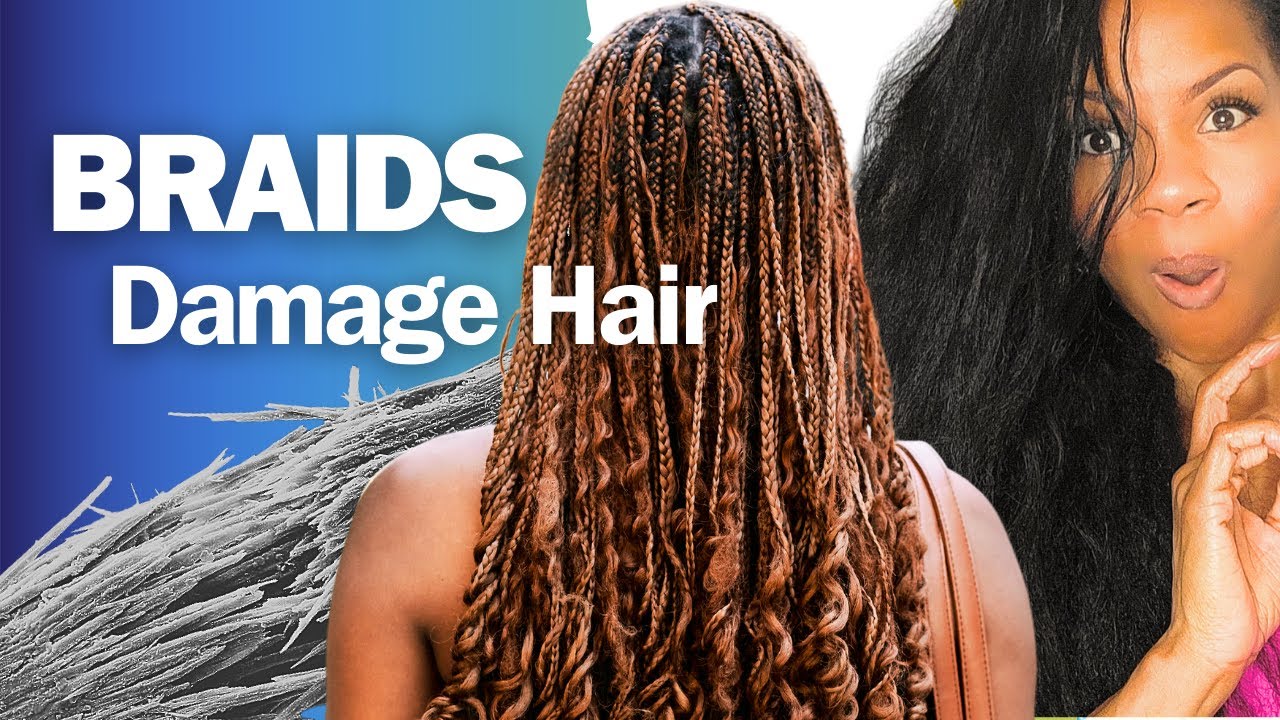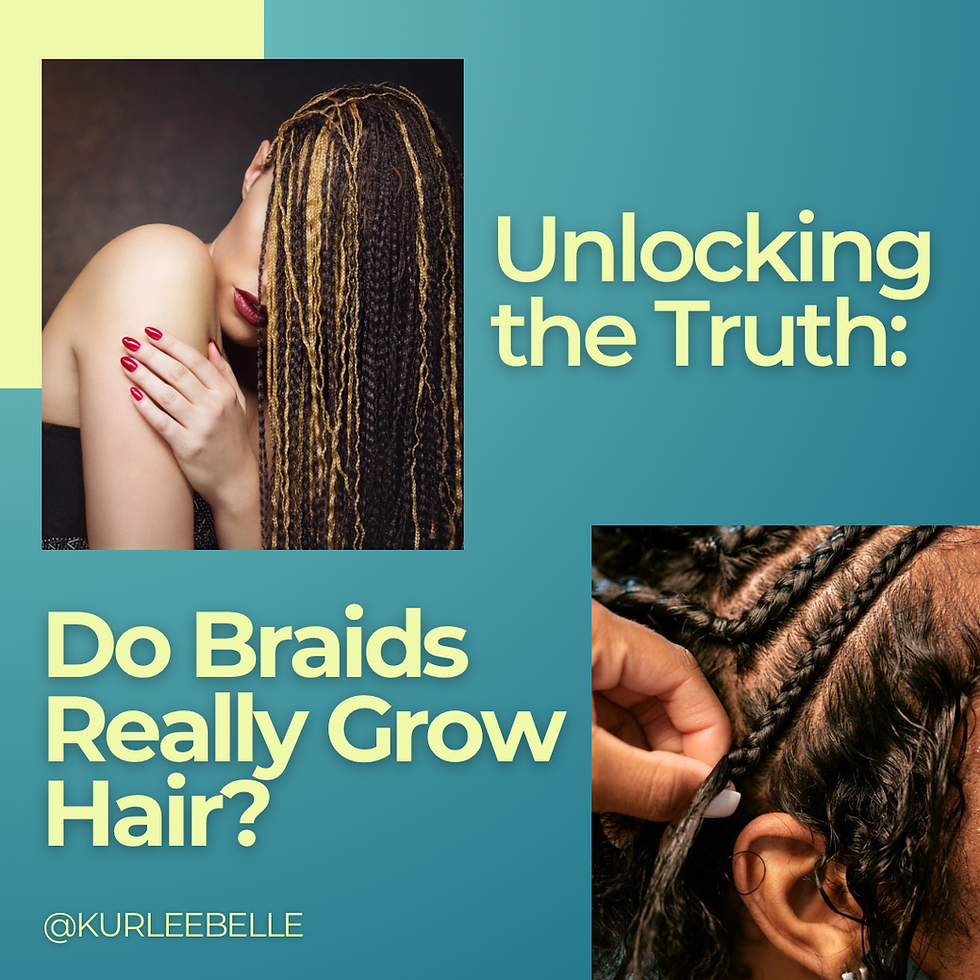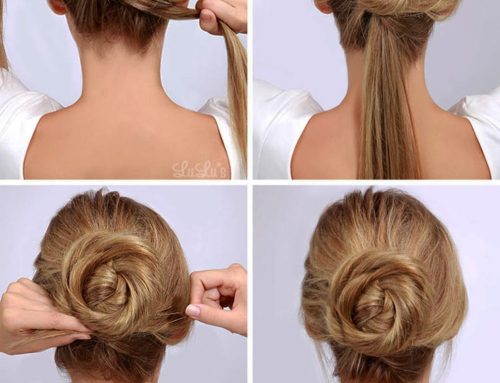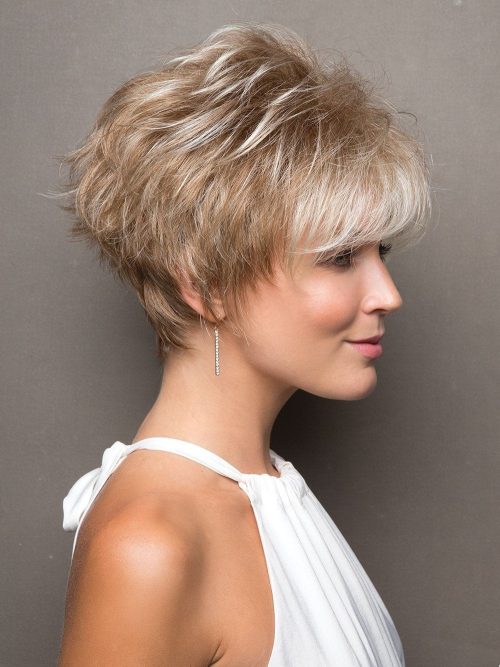Do Braids Damage Hair? The Truth You Need to Know
Braids are everywhere—on Instagram, at school, even on your favorite celebs. They’re cute, low-maintenance, and let you switch up your style without much effort. But here’s the big question buzzing around: Do braids damage hair? Maybe you’ve heard your friends say, “Oh, my hair broke off after braids!” or seen TikTok videos warning about bald spots. It’s confusing, right? One day, braids are a “protective style,” and the next, they’re the villain behind hair loss. So, what’s the real deal?
In this deep dive, we’re spilling all the tea. We’ll uncover if braids are secretly sabotaging your hair, share some surprising facts (did you know braids go back 5,000 years?), and give you practical tips to keep your locks healthy. Whether you’re a braid newbie or a pro who’s been rocking cornrows since forever, this article’s got something for you. Let’s get into it!
The Basics: What Are Braids, Anyway?
Before we jump into the damage debate, let’s break it down. Braids are when you weave three or more strands of hair together into a pattern. Think box braids, French braids, cornrows, or even those tiny micro braids you begged your mom for in middle school. They’re not just a modern trend—braids have been around since 3500 BC, starting with tribes in Africa, like the Himba in Namibia. Cool, huh?
Braids are loved for a reason:
- They keep your hair neat and tangle-free.
- They’re a time-saver—no daily styling needed.
- They let you flex your personality with beads, colors, or funky designs.
But here’s where the whispers start: some say braids pull too hard on your hair, while others swear they’ve grown Rapunzel-length locks thanks to them. So, which is it?
Do Braids Damage Hair? The Straight-Up Answer
Here’s the truth: braids can damage your hair, but they don’t have to. It’s not the braids themselves—it’s how they’re done, how long you keep them, and how you treat them. Think of it like riding a bike: it’s fun and safe with a helmet, but crash without one, and ouch! Same with braids—done right, they’re a win; done wrong, they’re trouble.
Let’s break it into three big factors that decide if braids are your hair’s BFF or its sneaky enemy:
Factor 1: Too-Tight Braids
Ever had braids so tight you couldn’t sleep without a headache? That’s a red flag. When braids pull too hard, they stress your hair follicles (the little roots where hair grows). Over time, this can lead to a condition called traction alopecia—fancy talk for hair loss from too much tugging.
- Science Bit: A 2016 study by the Perception Institute found that tight hairstyles are a top cause of hair loss in Black women, with nearly 50% facing some thinning in their lifetime.
- Real Life: My cousin Mia once got super-tight cornrows for a family party. She looked fire, but a week later, she noticed tiny bald patches near her edges. Yikes!
✔️ Tip: If your scalp feels sore or you see little bumps after braiding, they’re too tight. Tell your stylist to loosen up!
Factor 2: Leaving Braids in Too Long
Braids are low-maintenance, but they’re not “set it and forget it.” Keeping them past 6-8 weeks can spell trouble. Your hair keeps growing underneath, and the longer it’s stretched, the more tension builds up. Plus, dirt and sweat pile up, making your scalp a hot mess.
- Fun Fact: Hair grows about half an inch a month. After two months, that’s an inch of new growth pulling against those braids!
- Real Life: My friend Jake left his box braids in for three months because he was “too busy.” When he took them out, his hairline looked like it was running away.
❌ Don’t: Leave braids in past 8 weeks—6 is even better.
✔️ Do: Give your hair a break between styles (more on that later).
Factor 3: Bad Care Habits
Braids don’t mean you can ghost your hair care routine. Skipping washes or yanking them out wrong can weaken your strands. Ever seen those fuzzy ends after taking braids down? That’s breakage, not a vibe.
- Science Bit: Hair stylist Krysta Biancone says, “Loose braids protect hair from heat and tangles, but neglect them too long, and they’ll snap.”
- Real Life: I used to think dry shampoo was enough for my braids. Spoiler: it wasn’t. My scalp got itchy, and my ends split like crazy.
✔️ Tip: Wash your braids gently every 1-2 weeks with diluted shampoo. No rough scrubbing!

The Flip Side: How Braids Can Actually Help Your Hair
Okay, so braids can cause damage, but here’s the plot twist—they can also be a superhero for your hair. Done right, they’re a protective style, shielding your strands from the chaos of daily life. Here’s how:
Less Breakage from Friction
Loose hair rubs against clothes, pillows, even itself—causing splits and snaps. Braids tuck it all away, keeping it safe.
- Example: Ever notice how your hair tangles less in a braid? That’s less breakage in action.
No Heat or Chemicals
Curling irons, flat irons, relaxers—those can fry your hair. Braids let you skip all that and still look fly.
- Fun Fact: I ditched my straightener for braids last summer. My hair thanked me by growing an extra inch!
Growth Goals
Braids don’t make hair grow faster (sorry, that’s genetics), but they keep more of what grows. Less breakage = longer hair over time.
- Real Life: My aunt swears her waist-long locs came from years of braiding. She’s got a point—her hair’s never been healthier.
✔️ Tip: Pair braids with a solid scalp massage and oil to boost circulation. Healthy scalp, happy hair!
The Sneaky Stuff No One Talks About
Lots of articles give you the basics—tightness, duration, care—but there’s more to the story. Here’s some insider scoop you won’t find everywhere, straight from my chats with friends, stylists, and a little digging:
Synthetic Hair Drama
Love those long, colorful braids? Synthetic hair (like Kanekalon) can add length and flair, but there’s a catch. A 2025 Consumer Reports study found carcinogens (cancer-causing chemicals) in every synthetic braiding hair sample they tested. Plus, heating the ends with hot water releases funky gases called VOCs—bad for your lungs and your vibe.
- Weird Fact: My stylist once burned the ends of my braids with a lighter. It smelled like melted plastic—because it was!
- Latest Research: Lead was detected in 9 out of 10 synthetic hair products. Over time, that’s not great for your health.
✔️ Tip: Go for human hair extensions if you can, or at least air-dry synthetic ends instead of heating them.
Your Scalp’s Secret SOS
Your scalp’s like a quiet friend—it doesn’t scream until it’s mad. Tight braids can cause tiny sores or dents you don’t even notice. Left unchecked, that’s permanent damage territory.
- Real Life: I ignored an itchy spot once. Two weeks later, it was a bald patch the size of a dime. Lesson learned.
✔️ Tip: Check your scalp in a mirror weekly. Redness or bumps? Time to rethink your style.
The Emotional Side
Hair isn’t just hair—it’s you. Losing it from bad braids can hit hard. Dr. Afiya Mbilishaka, a psychologist and hair expert, says, “Hair loss from braids can trigger anxiety or even depression, especially for Black women who face extra pressure about their looks.”
- Real Life: When Mia lost her edges, she stopped taking selfies for months. It messed with her confidence big-time.
✔️ Tip: If braids stress you out, try looser styles or a break. Your mental health matters too!
Braids vs. Other Styles: A Showdown
How do braids stack up against straight or curly looks? Let’s compare:
| Style | Pros | Cons | Damage Risk |
|---|---|---|---|
| Braids | Protective, low-maintenance | Tightness, neglect issues | Medium-High |
| Straight | Easy to style | Heat damage, chemical risks | High |
| Curly/Loose | Natural, low tension | Friction, tangles | Medium |
- Takeaway: Braids win for protection if you play it smart. Straight styles lean on heat, and loose hair fights daily wear-and-tear.
How to Braid Without Breaking Your Hair
Ready to rock braids without the drama? Here’s your step-by-step guide to keeping your hair happy:
Step 1: Prep Like a Pro
Healthy hair starts before the braids go in.
- ✔️ Wash with a clarifying shampoo to remove buildup.
- ✔️ Deep condition for 30 minutes to hydrate.
- ✔️ Detangle gently—wet hair with conditioner is your friend.
Example: I use a coconut oil mask before braiding. My hair feels like silk after!

Step 2: Braid Smart
The install is make-or-break time.
- ✔️ Ask for medium tension—not too tight, not too loose.
- ❌ Skip heavy extensions—they add stress.
- ✔️ Start with clean, dry hair to avoid mold (gross but real).
Pro Quote: Stylist Christal Mercier says, “Hair shouldn’t hurt. If it does, speak up!”

Step 3: Maintenance Magic
Keep your braids fresh and your scalp smiling.
- ✔️ Wash every 1-2 weeks: Mix shampoo with water in a spray bottle, spritz, and rinse gently.
- ✔️ Moisturize with light oils (coconut, jojoba) or a leave-in conditioner.
- ✔️ Sleep with a satin scarf—cotton pillows steal moisture.
Real Life: I started wrapping my braids at night. No more frizzy ends!
Step 4: Take ’Em Down Right
Removal’s where lots of damage sneaks in.
- ✔️ Cut off extensions first, then unravel slowly.
- ✔️ Use conditioner to soften knots.
- ❌ Don’t yank—patience is your hair’s bestie.
Steps:
- Snip synthetic ends with scissors.
- Spray with water and conditioner.
- Untwist section by section, detangling as you go.

Step 5: Rest and Recover
Give your hair a breather between styles.
- ✔️ Wait 1-2 weeks before re-braiding.
- ✔️ Try a loose style (twists, puffs) in between.
- ✔️ Treat your scalp to a DIY massage with peppermint oil—feels amazing and boosts blood flow.
Fun Fact: I went braid-free for a month and obsessed over hair masks. My strands came back stronger than ever!
Myths Busted: What You’ve Heard vs. What’s True
There’s so much noise about braids—let’s clear it up:
Myth 1: Braids Make Hair Grow Faster
- Truth: Nope! Hair growth is all genes and health. Braids just keep more length by cutting breakage.
- Science: Your hair grows about 0.5 inches monthly, braided or not.
Myth 2: Synthetic Hair Always Damages Natural Hair
- Truth: Not if you prep and remove it right. The real culprits are tight installs and rough takedowns.
- Tip: Coat your natural hair with a leave-in before adding synthetic strands.
Myth 3: Braids Are Only for Thick Hair
- Truth: Thin or fine hair can rock braids too—just go for smaller, lighter styles to avoid strain.
- Example: My friend with baby-fine hair loves micro braids. She just keeps them loose.
Latest Research: What’s New in 2025?
Hair science is always evolving. Here’s what’s fresh as of March 2025:
- Synthetic Hair Risks: That Consumer Reports study dropped a bomb—lead and VOCs in synthetic hair are real concerns. Brands are scrambling to clean up their act, but check labels for now.
- Traction Alopecia Reversal: Good news! Early hair loss from braids can bounce back if you catch it soon. Dermatologists say a 2-month braid break plus scalp treatments can regrow edges.
- Scalp Health Buzz: New studies link scalp hydration to stronger hair. Moisturizing braids isn’t just nice—it’s necessary.
✔️ Tip: Look for “clean” braiding hair brands popping up this year—less chemicals, more peace of mind.
Braids for Every Hair Type
Not all hair’s the same, so here’s how to tweak braids for your strands:
Curly/Coily Hair (Type 3-4)
- Best Styles: Box braids, twists, cornrows.
- Why: Locks in moisture, cuts tangles.
- Watch Out: Edges are fragile—keep tension low.
Wavy Hair (Type 2)
- Best Styles: French braids, loose plaits.
- Why: Adds definition without heat.
- Watch Out: Over-braiding can stretch waves flat.
Straight Hair (Type 1)
- Best Styles: Fishtail, Dutch braids.
- Why: Adds texture, stays sleek.
- Watch Out: Slippery strands need gentle detangling post-braid.
Your Braid Survival Kit
Stock up on these to keep your hair thriving:
| Product | Why It Rocks | How to Use |
|---|---|---|
| Satin Scarf | Stops frizz, keeps moisture in | Wrap at night |
| Spray Bottle | Easy washing on the go | Mix shampoo + water |
| Coconut Oil | Hydrates without grease | Massage into scalp weekly |
| Wide-Tooth Comb | Gentle detangling | Use post-braid with conditioner |
Let’s Talk: Your Turn!
Braids are personal—what works for me might not for you. So, let’s chat:
- What’s your fave braid style? Drop it in the comments!
- Ever had a braid disaster? Spill the story—I’ll share mine too.
- Not sure if braids are for you? Ask me anything—I’m here to help!
Challenge: Try one tip from this guide and tell me how it goes. Did your hair feel stronger? Scalp happier? I’m dying to know!
Final Thoughts
So, do braids damage hair? Not if you’re smart about it. They’re a tool—use them right, and they’ll protect your hair like a champ. Go too tight, too long, or skip the care, and they’ll turn on you. The power’s in your hands (and your stylist’s!).
With the right moves—loose tension, solid maintenance, and a little love—braids can be your hair’s best friend. Rock them with confidence, knowing you’ve got the full scoop. Now, go slay that style!




